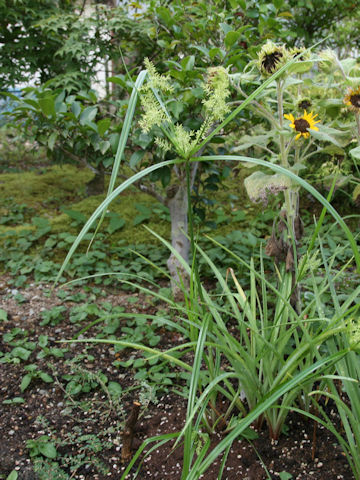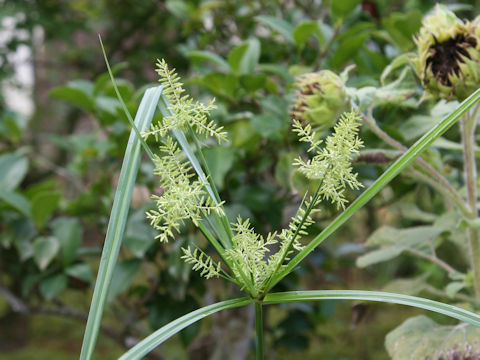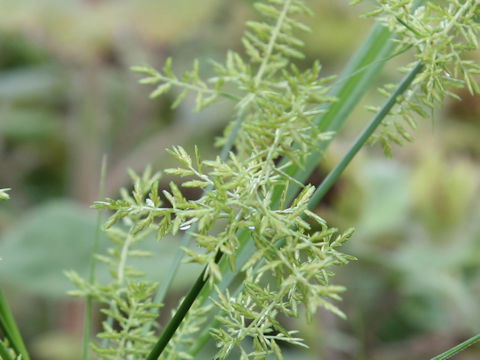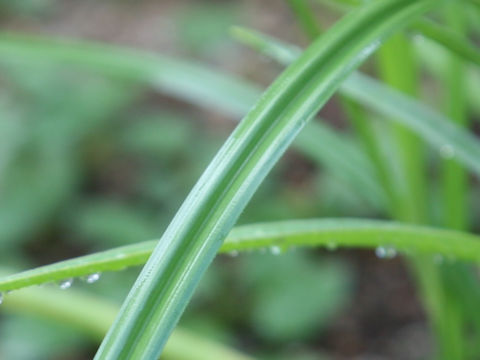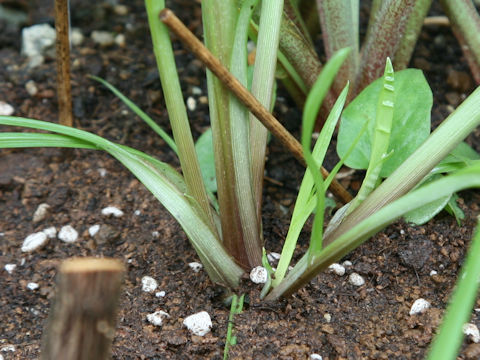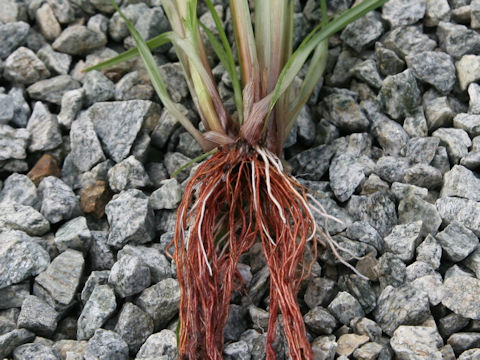
|
The Yellow nutsedge (Cyperus esculentus) belongs to Cyperaceae (the Sedge family). It is a perennial herb that is native to Europe and North Africa. It has become naturalized throughout the world and is distributed in Japan in the northeastern part of Honshu and southward. It grows in fields, rice paddies, pastures, and along roadsides, and grows 30 to 120 cm tall. It produces small yellowish-brown spikelets from August to October. The spikelets are composed of two rows of 15 to 30 scales. The bract leaves are much longer than the inflorescence. The underground stem has white and reddish-brown stripes. There are several varieties of this plant around the world, with the cultivated type being used as a food source for tubers in the Mediterranean basin and West Africa, etc., and the weedy type being used as a weed in fields and pastureland. In Japan, it is designated as an invasive alien species requiring special attention under the Invasive Alien Species Act. The Japanese name is derived from the fact that its caudex is edible. It is also called "Ki-hamasuge" because its inflorescence is yellow, similar to that of "Hamasuge" (Nut grass). It is a C4 plant (Plants with C4-type photosynthesis).
|
